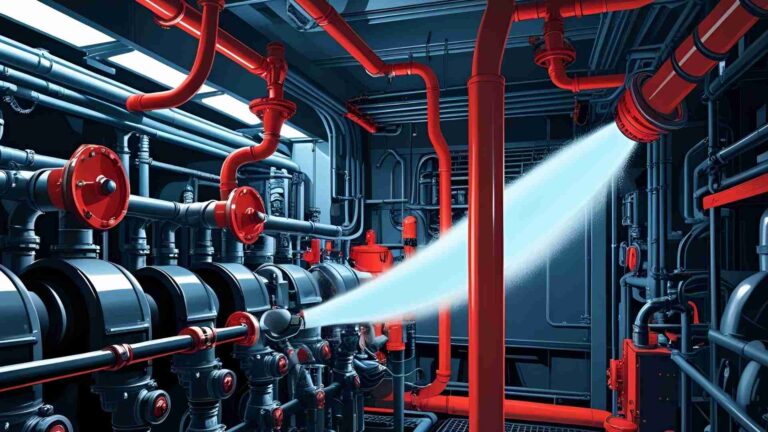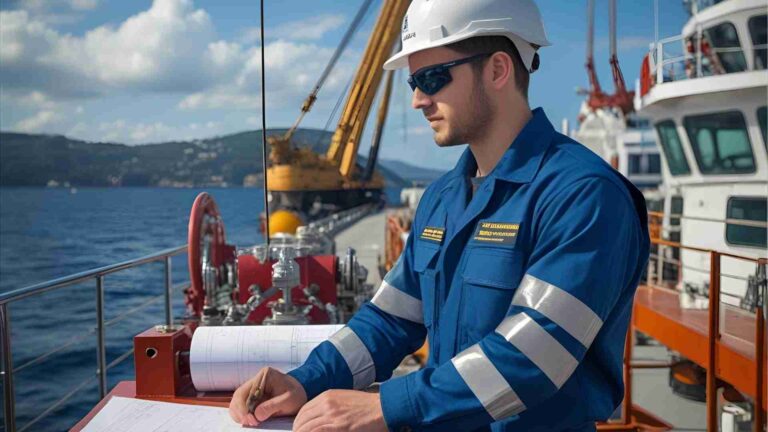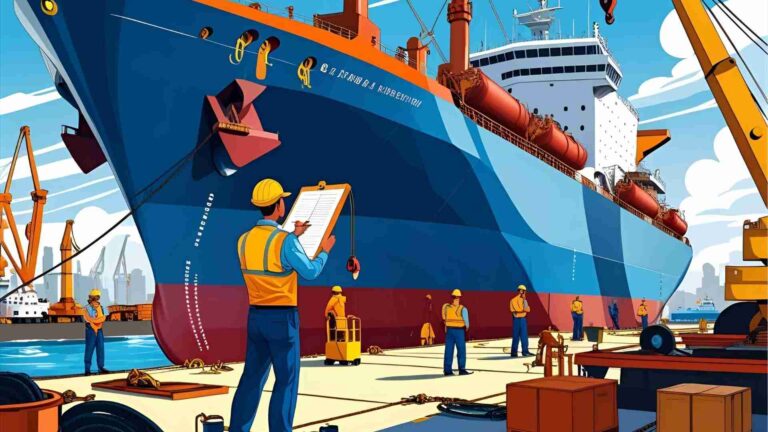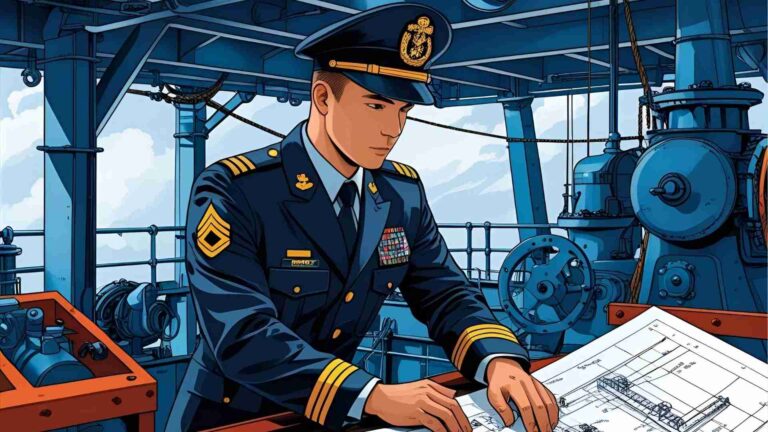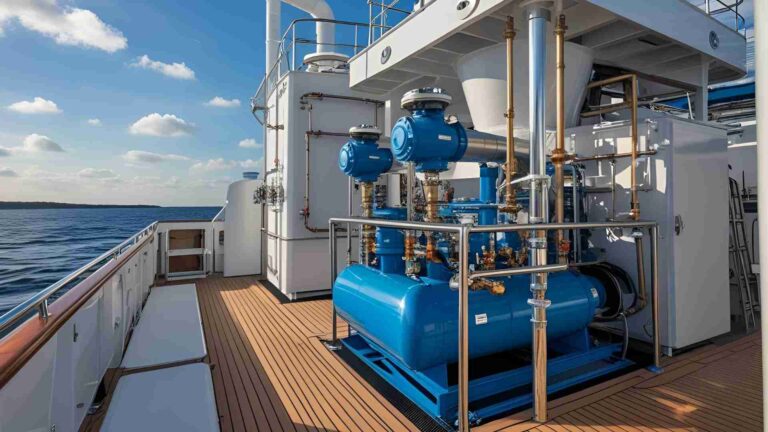Steering Gear Problems and Failure of Ships
Navigational safety is a cornerstone of maritime operations. The steering gear system is the heart of a ship’s maneuverability, controlling the rudder and ensuring accurate course adjustments. Despite technological advancements and rigorous maintenance, steering gear failures remain one of the most critical risks at sea, potentially causing collisions, groundings, and environmental hazards.
This guide provides an in-depth analysis of steering gear systems on ships, common problems, failure causes, emergency response, maintenance procedures, and safety measures for maritime operators. It is designed for ship engineers, navigational officers, maritime students, and professionals interested in comprehensive technical insights.
Overview of Steering Gear Systems on Ships
A steering gear system is essential equipment on every ship. It allows precise control of the rudder to change the vessel’s direction, avoid obstacles, and navigate through restricted waters. Modern vessels rely on sophisticated steering mechanisms that integrate hydraulic, electro-hydraulic, or mechanical systems.
Key Roles of Steering Gear:
- Control the rudder and adjust the ship’s direction.
- Assist in collision avoidance and navigation through narrow channels.
- Ensure vessel stability in challenging sea conditions.
- Work in coordination with autopilot and other safety systems.
The importance of steering gear systems cannot be overstated. Failures may result in accidents with serious financial, environmental, and human consequences.
What Is a Steering Gear System?
A steering gear system translates bridge commands into rudder movements, enabling the ship to follow the intended course. The system connects the helm on the bridge to the rudder via a combination of control units, power units, and feedback mechanisms.
Modern steering gears often utilize:
- Hydraulic systems: High torque and smooth operation.
- Electro-hydraulic systems: Combine electrical signals and hydraulic force for precise control.
- Mechanical systems: Traditional chain, wire, or screw mechanisms for small or auxiliary vessels.
The integration of these systems ensures reliable navigation across various sea conditions, from calm waters to severe storms.
Parts of a Steering Gear System
The steering gear system consists of three main components:
Telemotor
The telemotor transmits commands from the bridge to the steering gear in the engine room. Modern telemotors use hydraulic or electric signals to control rudder movement. The telemotor is responsible for:
- Sending precise steering commands.
- Translating helm input into hydraulic or mechanical movements.
- Ensuring immediate response of the rudder to bridge orders.
Control Unit
The control unit acts as an intermediary between the telemotor and the power unit. Functions include:
- Receiving commands from the bridge.
- Processing feedback from the rudder to maintain the desired angle.
- Activating actuators to adjust the rudder smoothly.
Feedback mechanisms such as hunting gear ensure that the rudder moves accurately to the commanded angle, preventing overshoot or oscillation.
Power Unit
The power unit generates the force required to move the rudder. It typically operates as:
- Hydraulic power unit: Uses pressurized fluid to move cylinders connected to the rudder.
- Electro-hydraulic power unit: Combines electric motor drive with hydraulic actuation.
The power unit ensures that even large rudders can respond quickly and accurately to bridge commands.
Types of Steering Gear Systems
Steering gear systems vary based on ship size, operational requirements, and technological complexity.
| Steering Gear Type | Mechanism | Typical Use | Advantages | Limitations |
|---|---|---|---|---|
| Ram-Type | Hydraulic rams move the rudder linearly | Large vessels | High torque, smooth motion | Requires hydraulic maintenance |
| Rotary Vane | Rotary hydraulic mechanism | Medium vessels | Compact, efficient, precise | Moderate complexity |
| Electro-Hydraulic | Electric motor with hydraulic actuation | Large commercial vessels | Precise control, automated | Higher cost, complex maintenance |
| Rotary (Screw) | Mechanical screw converts rotary to linear motion | Small vessels | Simple, easy maintenance | Low torque, slower response |
| Mechanical (Chain/Wire) | Chains, wires, pulleys | Small vessels or backup | Manual, minimal power | Limited torque, less precise |
Ram-Type Steering Gear
Overview: Ram-type systems use hydraulic rams to move the rudder directly. They are the most common choice for large vessels, such as oil tankers and bulk carriers, due to their ability to produce high torque.
Advantages:
- Smooth and precise control.
- High torque suitable for heavy rudders.
- Durable under extreme sea conditions.
Hydraulic Principles:
- Pressurized oil drives pistons connected to the rudder.
- Valves regulate flow for smooth movements.
- Feedback ensures correct rudder angle.
Maintenance Notes:
- Regular oil checks.
- Seal and gasket inspections.
- Valve operation testing.
Rotary Vane-Type Steering Gear
Overview: Converts hydraulic pressure into rotary motion. Suitable for medium-sized ships where space efficiency is critical.
Advantages:
- Compact and lightweight.
- Allows precise automated steering.
- Smooth continuous motion ensures stability.
Use Cases:
Cargo ships, offshore vessels, ferries.
Maintenance Notes:
- Check vane and rotor wear.
- Ensure hydraulic fluid cleanliness.
- Monitor for vibration and air entrapment.
Electro-Hydraulic Steering Gear
Overview: Combines electrical controls and hydraulic actuation for advanced performance. Commonly installed in container ships, cruise liners, and tankers.
Advantages:
- Precise and responsive steering.
- Supports autopilot and remote control functions.
- Energy efficient compared to purely hydraulic systems.
Maintenance Notes:
- Inspect electrical control panels regularly.
- Test backup hydraulic systems.
- Maintain hydraulic oil pressure and temperature.
Rotary Steering Gear
Uses a screw or mechanical system to convert rotary motion into linear rudder movement.
Advantages:
- Simple design, easy to maintain.
- Compact for small vessel installations.
- No reliance on complex hydraulics or electronics.
Limitations:
- Lower torque, slower response.
- Limited use in large vessels; mostly auxiliary or backup system.
Mechanical (Chain and Wire) Steering Gear
One of the oldest systems. Operates entirely via chains, wires, and pulleys.
Advantages:
- Simple, manual operation.
- Minimal maintenance aside from lubrication.
- Reliable as backup system.
Limitations:
- Limited torque for large rudders.
- Dependent on manual input.
- Susceptible to wear and stretching of wires.
Auxiliary Steering Gear
An auxiliary system is essential to maintain control when the main steering gear fails.
Requirements (SOLAS):
- Must move rudder 35° from one side to the other within 28 seconds at maximum draft.
- Controlled from the main steering console.
- Can operate independently of the main power source.
Auxiliary systems ensure continuity of operations and safety during partial failures.
Emergency Steering Gear
The emergency steering gear is a last-resort system, often manually operated, located near the rudder.
Key Points:
- Controlled locally, often via manual or basic hydraulic mechanisms.
- Provides minimal control to reach safety.
- Required on all ships under SOLAS regulations.
Emergency steering is crucial in critical situations where both main and auxiliary systems are non-functional.
Common Steering Gear Problems
Frequent Issues Include:
- Oil Leakages: Environmental risk; often due to worn seals or gaskets.
- Rudder Angle Discrepancies: Caused by misadjusted control levers or repeat-back systems.
- Unsatisfactory Steering: Malfunctioning valves can increase fuel consumption and delay ETA.
- Excessive Noise & Vibration: Indicates air in the hydraulic system.
- High Oil Temperature: Low oil levels can reduce system efficiency.
- Rudder Limits Exceeded or Restricted: Faulty limit switches may compromise movement.
- Remote Control Failures: Hydraulic or electrical issues can disable bridge control.
- Linkage Failures: Detachment of tiller or rudder angle transmitter can disable indicators.
Case Study: BBC Africa Collision, Houston Ship Channel – 2023
- Failure in bridge wing tiller micro switch led to unintended rudder movement.
- $1.1M damage due to delayed activation of emergency steering.
- Highlights the need for rapid response and crew training.
Causes of Steering Gear Failures
- Hydraulic system leaks, pressure drops, or pump failures.
- Electrical control malfunctions.
- Mechanical wear of rams, pistons, or rotary vanes.
- External damage from collisions or grounding.
- Poor maintenance, inadequate training, or improper emergency response.
Emergency Procedures
Immediate Actions:
- Reduce engine speed.
- Switch to emergency or local steering.
- Inform master, engine officer, and port authorities.
- Use anchor if necessary in restricted waters.
Tools Required:
- Manual valves and handles.
- Local rudder indicators.
- Emergency communication systems.
Maintenance and Inspection
- Pre-departure checks of rudder angle and control systems.
- Quarterly emergency drills.
- Hydraulic oil sampling and filter replacement.
- Valve configuration checks post-maintenance.
- Documentation of steering system inspections.
Steering Gear System Diagram

The helm sends commands to the telemotor, processed by the control unit, powered by the hydraulic/electro-hydraulic unit, moving the rudder. Feedback ensures accuracy.
Navigation Risk Prevention
- Pre-voyage planning considering steering failure scenarios.
- Coordination with tugs and vessel traffic services.
- Bridge Resource Management for clear communication.
- External assistance planning for emergency ports or anchorages.
Investigation and Lessons Learned
Contributing Factors in Failures:
- Incomplete understanding of system operation.
- Ambiguous procedures.
- Insufficient crew training.
- Maintenance or configuration errors.
Preventive Measures:
- Standardized procedures and terminology.
- Predictive maintenance technologies.
- Scenario-based crew training.
- Collaboration with manufacturers for technical improvements.
Frequently Asked Questions
A steering gear system is the mechanism that controls a ship’s rudder, allowing the vessel to change direction while underway. It translates commands from the bridge, whether from the helmsman or autopilot, into mechanical movement to adjust the rudder. This system is critical for safe navigation, avoiding collisions, and maneuvering in tight waterways.
The main components include the telemotor, which transmits steering commands from the bridge; the control unit, which processes the signals and ensures the rudder moves correctly; and the power unit, which provides the mechanical force to turn the rudder.
Other essential parts include actuators, feedback mechanisms, hydraulic or electro-hydraulic pumps, and the rudder angle indicator. Together, these components ensure accurate and reliable steering.
In a hydraulic steering system, pressurized hydraulic oil is sent from the pump to the actuators, such as rams or rotary vanes, which then move the rudder.
The system includes control valves and a feedback mechanism to ensure the rudder reaches the commanded angle.
Hydraulic systems are widely used because they can generate the high torque needed for large vessels and provide smooth, precise rudder movements.
The rudder angle indicator displays the current position of the rudder in degrees. It provides vital information to the helmsman, bridge officers, and engineers to ensure the vessel is steering accurately.
Knowing the exact rudder position helps avoid over-steering, ensures compliance with safety regulations, and allows the crew to respond promptly in case of a steering system malfunction.
Emergency steering gear is a backup system designed to maintain minimal control of the rudder if both the main and auxiliary steering systems fail. It allows the vessel to navigate to a safe location or port, preventing accidents like grounding or collisions. Depending on the ship, emergency steering can be manual, hydraulic, or mechanical and is typically operated from the steering gear compartment near the rudder.
Conclusion
In conclusion, the steering gear system is one of the most critical components of a ship, directly impacting navigational safety, maneuverability, and operational efficiency. It connects the bridge commands to the rudder, allowing precise control of the vessel’s direction under varying sea conditions.
Modern ships rely on advanced systems, such as hydraulic, electro-hydraulic, and rotary vane steering gears, which provide high torque, smooth operation, and redundancy. Despite technological advancements, steering gear failures remain a significant risk, often caused by mechanical wear, hydraulic issues, electrical malfunctions, or human error. Regular maintenance, routine inspections, and crew competency are vital to preventing accidents.
Auxiliary and emergency steering systems provide essential backup, ensuring the vessel can maintain control even during system failures.
Adhering to international regulations, conducting thorough pre-departure checks, and implementing emergency procedures are crucial measures that safeguard lives, protect the environment, and maintain the safe operation of ships worldwide.
Happy Boating!
Share Steering Gear Problems and Failure of Ships with your friends and leave a comment below with your thoughts.
Read Ship Propulsions: Types, Technologies, and Trends until we meet in the next article.

